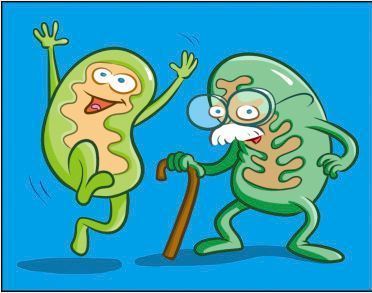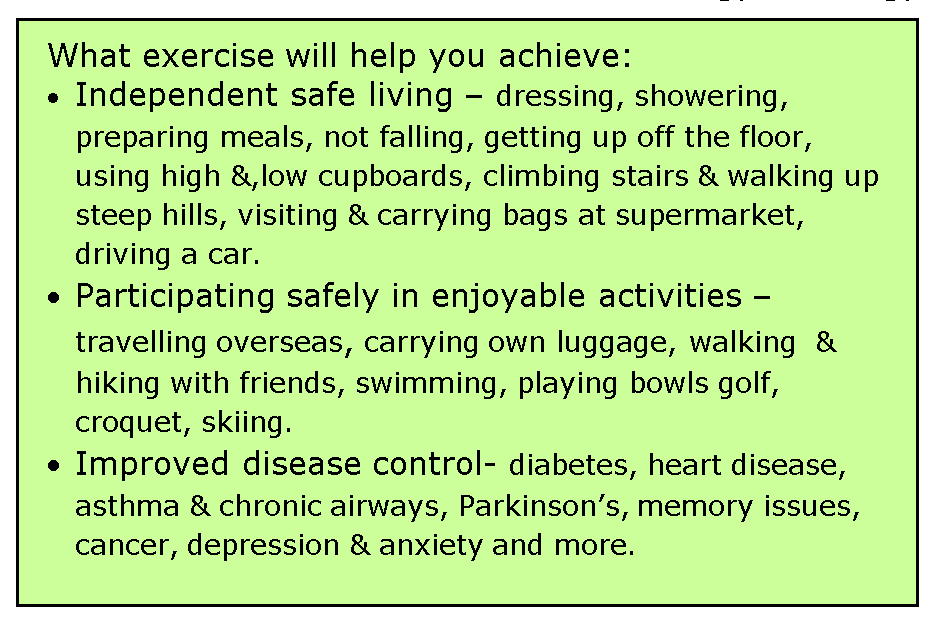Increasing Exercise for a Positive Lifestyle
Fact Sheet 27 - from June 2023 Newsletter
Four positive lifestyle choices have far reaching impact for ‘undoing’ or reversing a wide range of chronic diseases. Professor Dean Ornish found these can reverse heart disease, early prostate cancer, type 2 diabetes and a number of chronic ailments. (Many diseases, like chronic inflammation, or ongoing emotional distress, share common underlying biological pathways). Ornish’s lifestyle programme has four components - eat well, move more, stress less and love more. This month, let’s talk about moving more.
But first lets do some biochemistry and learn about the mitochondria:
n 1898 microbiologist Dr Carl Benda observing sperm cells with a light microscope noticed an encapsulated shape with threads (mitos) and granules (chondros) which he called collectively mitochondria; today much more is known about this specialised cell structure found in most cells of the body.

It is thought that aeons ago mitochondria were bacteria which merged symbiotically with eukaryotic cells (those with a nucleus and genes). In exchange for food and protection from the high oxygen environment at that time, mitochondria gave the host cell extra energy for survival. This action allowed the evolutionary development of plants, animals and humans. Mitochondria have their own independent gene centre (inherited from mother, with multiple copies of circular DNA) which prompts production of extra cell energy in the structure’s folded inner membrane linings. The protein-complexes in mitochondria convert food and oxygen to a high-energy ATP (adenosine triphosphate) molecule that powers more than 90% of the biochemical reactions in a cell. Around a billion ATP molecules are found in the average cell, and these are recycled three times every minute, occupying 25% of the cell space and contributing about 10% of the body’s weight.
Cell mitochondria numbers can range from several hundred to thousands, especially in active organs like the heart, skeletal muscle, and brain and also the ovary’s dividing egg cells, which number more than 100,000. Despite the presence of the protective antioxidant molecules that slow adverse reactions, mitochondria are easily damaged by becoming overheated and producing unstable free-radical sparks. When cell energy falls below 10%, specific molecules initiate cell recycling centres that remove damaged mitochondria and initiate mitochondria reproduction.
The mitochondria are not just an energy factory; they also respond to adverse environmental conditions (such as unstable free radicals, inflammation, toxic chemicals, radiation, or drugs) with a ‘danger response’ reducing energy and focusing on cellular defence. When we are young, mitochondria are abundant and efficient, but after 40 years most people have significant mitochondrial dysfunction; one study demonstrated 85% damaged mitochondria in skeletal muscle in a 90 year-old man.
Since the 1980’s the Mitochondrial Theory of Ageing has suggested that as mitochondria suffer wear and tear, especially free-radical damage, they lose efficiency and function, leading to chronic disease, ageing, and cancer;
mitochondria are a biological clock of the ageing process.
Let's talk - Move More
I often discuss the magic of exercise to improve health and wellness. We now know that short bursts of intense exertion, followed by rest, improved lung function, are a strong predictor of longevity. This means that intense mild to moderate forms of aerobic exercise - running, walking, swimming, and cycling – use more oxygen and increase the muscle-cell mitochondria count by as much as 50% in six weeks, even in older people.
Aerobic Exercise also releases Brain Derived Neurotrophic Factor (BDNF) from our muscles; this increases brain cells in the frontal cortex and hippocampus, supporting learning, memory, higher thinking and ability to adapt to stress (neuroplasticity). However, undertaking extreme physical activity, such as an ultramarathon, is detrimental because unstable free radicals cause damage and inflammation to skeletal muscles, the heart muscle and even other internal organs. Resistance training (weightlifting, resistance bands) has little effect on building mitochondria numbers and the release of BDNF, but can prevent age-related muscle-wasting (sarcopenia), which is common in the elderly.
So we know exercise is good for us, but it’s hard work, and few are motivated to go to the gym or see a personal trainer. Let’s rethink the problem. What life goals do you have that will need stronger muscles and aerobic fitness to achieve them? See the list below. Consult an exercise trainer for an individualised fitness plan. If you are already struggling with independent living, enrol in the ‘Falls Program’ and get a personal exercise programme formulated by a visiting physiotherapist.
Be proactive this year; why not choose one small change in this area in favour of a healthy lifestyle?
RJC

